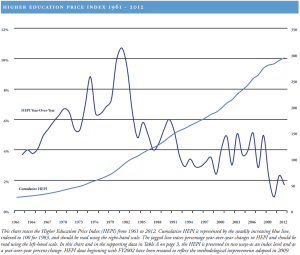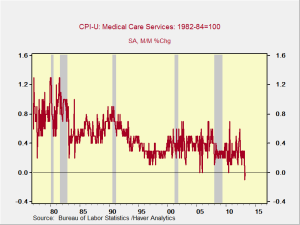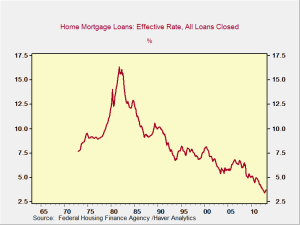There are many driving factors behind the potential crisis in student loans, but one of the largest is the increase in the cost of college over the past couple of decades. It’s difficult to derive the actual statistics from the data, but several datasets I reviewed show that the college education inflation rate is between 150 percent and 200 percent of the base price inflation rate. Financial planning courses suggest planners use a similar ratio.
In a previous post, I talked about why service industries, such as medicine and education, are much more difficult to scale. Inputs—doctors and teachers—become less effective with scale, which means that costs go up with size. That’s why medical and educational expenses increase faster than overall prices.







